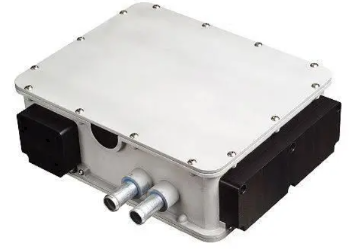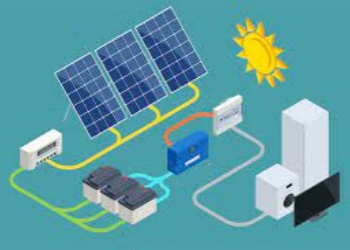What factors affect the price of Off-Grid Solar Inverter
The use of renewable energy is becoming more common in the world today. Solar energy is one of the most prevalent forms of renewable energy. Solar energy systems are becoming more advanced, efficient, and affordable. One key component of a solar energy system is the Off-Grid Solar Inverter. This article will examine the Off-Grid Solar Inverter, its features, applications, and prices.

Introduction to Off-Grid Solar Inverter
An Off-Grid Solar Inverter is equipment that converts the direct current (DC) generated by solar panels into alternating current (AC); this allows the solar energy to power appliances and other electrical devices that require AC power. Inverters are crucial in operating off-grid solar systems (not connected to the primary grid). Off-grid systems are typically used as backup power sources in remote areas or during power outages.
Features of Off-Grid Solar Inverters
Off-grid solar Inverters have several unique features that make them an essential component of an off-grid solar system. Here are some of the features of Off-Grid Solar Inverters:
1. high efficiency: Off-grid solar Inverters are designed to be highly efficient, converting a large percentage of the direct current power generated by the solar panels into AC power; this allows the system to generate the maximum amount of power possible from the available solar energy.
2. Power Conversion: The inverter switches the direct current emerging by the solar panel into alternating current, which is suitable for supplying power to electrical appliances and other electrical equipment.
3. Voltage Regulation: Off-grid solar Inverters have voltage regulation capabilities, allowing them to stabilize the voltage output of the system; this ensures that the voltage remains within safe operating levels, protecting sensitive electrical equipment from voltage spikes or sags.
4. Energy Storage: Some Off-Grid Solar Inverters can be combined with batteries to provide backup power during periods when there is no sunshine; this allows the system to continue providing power to critical loads even when the sun is not shining.
5. Networking: Some advanced Off-Grid Solar Inverters have built-in network capabilities, allowing them to communicate with other system components and provide operational data and status updates. This information can be used to monitor and optimize system performance.
Applications of Off-Grid Solar Inverters
Off-grid solar Inverters have a wide range of applications, including:
1. Remote Communities: Off-grid solar systems are commonly used in remote communities where access to the primary power grid is limited or non-existent. They provide a sustainable and cost-effective solution for providing electricity to these communities.
2. Rural Areas: Many rural areas in developing countries need access to reliable electricity grids. Off-grid solar systems with inverters can provide a reliable source of electricity for these areas, improving living conditions and enabling economic development.
3. Emergency Backup: Off-grid solar systems with inverters can offer emergency backup power during power outages or natural disasters, ensuring the continued operation of critical electrical appliances and equipment.
4. Remote Facilities: Remote facilities such as telecommunications towers, weather stations, and security cameras require a reliable source of electricity. Off-grid solar systems with inverters provide an efficient and sustainable solution for these applications.

Factors affecting the price of off-grid solar inverters
1. Technology and performance: Advanced inverter technology can improve power conversion efficiency and enhance system stability but may also bring higher costs. The performance parameters of the inverter, such as power, efficiency, stability, etc., will affect its price.
2. Brand and quality: Inverters from well-known brands usually have higher prices because these brands provide higher guarantees in terms of product quality, after-sales service, etc.
3. Size and Power: The size and power of the inverter are also factors that affect the price. Generally speaking, larger and more powerful inverters will cost more.
4. Raw materials and production costs: The inverter's raw materials and production costs also affect its price. For example, high-quality solar panels, reliable internal parts, etc., will increase production costs, thus affecting the market price of inverters.
5. Market demand and supply: The demand and supply of off-grid solar inverters will also affect their prices. If the market demand is high and supply is low, prices may rise; conversely, prices may fall if the market is oversupplied and demand is low.
6. Policies and subsidies: Government support policies for renewable energy and related subsidy programs will also impact the price of off-grid solar inverters. Some guidelines encourage manufacturers to lower costs, while others may help raise prices.
Supplier
PDDN Photoelectron Technology Co., Ltd. is one of the leading enterprises in the Home Accessory and Solar Power System, which is fully involved in developing the power industry, intelligent operation and maintenance management of power plants, solar panels, and related solar products manufacturing. We will be committed to providing users with high-quality, efficient products and considerate service.
It accepts payment via Credit Card, T/T, West Union, and Paypal. PDDN will ship the goods to customers overseas through FedEx, DHL, by sea, or by air. If you want a high-quality Off-Grid Solar Inverter, please inquire; we will help.
